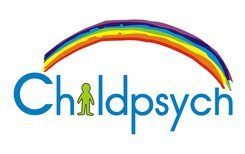Kids learning about the world through the wonder of play dough.
I’m not a night owl. In fact, most nights I battle to stay awake past 8pm. But last Wednesday evening I found myself in the kitchen at 11:30pm happily humming to myself and shuffling along in my slippers – making play dough. I would have probably kept going till dawn had I not run out flour!
I never seem to tire of seeing how a pot full of runny gunk can turn into that wonderful, pliable, moldable, stretch-break-and-reunitable substance known as play dough. And it seems to have the same effect on kids. In my teaching days I always relied on hauling out my big tub of play dough at the end of a difficult day to calm the kids down – and it worked every time. It also has immense educational value and so, I’ve decided to share with you my play dough recipe and some ideas on how to use it – have fun!
To make playdough you will need:
2 cup of cake flour (NOT the self-raising kind)
1 cup of salt
2 cups of water
2 tablespoons of oil
2 tablespoons of cream of tartar
1 teaspoon of food colouring in your favourite colour
Mix all the ingredients well in a medium sized pot and place the pot on the stove. Stir over medium heat until the liquid thickens and becomes pliable then take the pot off of the stove and wait for your play dough to cool down. Ta-da: As easy as that!
Some ideas on how to use your play dough:
- Using primary colours to mix secondary colours: This must be one of my all time favourite party tricks (at least 5 years olds seem to find it pretty amusing). Make three batches of play dough in the primary colours (red, blue and yellow) and then break off equally sized portions from each colour. In your hands, mix and knead together two colours at a time and watch the colour change to a secondary colour. This is a great way to demonstrate to your kids that red + blue = purple; red + yellow = orange; blue + yellow = green and then also that red + blue + yellow = brown. I also like to make a batch of white play dough (just leave out the food colouring) and use this to create lighter shades of each colour and of course, you’ll need to mix white and red to make every little girl’s favourite colour: pink.
- Enhance your child’s sensory experience by adding a few drops of food essence or some aromatherapy oils to the ingredients when you make your play dough to tickle his olfactory (smell) sense or add different grains and legumes such as rice, sago, butter beans or lentils to your batch of already made play dough to stimulate his tactile (touch) sense.
- Make a batch of play dough in your child’s favourite colour (although the colour therapists would probably recommend that you use calming colours such as blue, green or purple) and add a few drops of lavender aromatherapy oil to it. Give it to him to play with when he’s feeling a little stressed or needs to calm down. This also works as a stress reliever for tired moms – you might even want to keep a small ball of this dough in your desk drawer at work.
- Use cookie cutters, plastic eating utensils, dough rollers, old curlers, and just about anything you can think of to make different shapes and patterns in your play dough. The pliability of play dough also makes it a great tool to teach children about different shapes: for instance, if you stretch out the sides of a square you get a rectangle and in the same way you get a cylinder when you roll up the sides of a rectangle.
- All that tearing, kneading, rolling and pinching is wonderful to help develop and strengthen the fine motor muscles in your child’s fingers, hands and wrists.
- Let your imagination run wild. There is not a monster, creature or fantasy figure that cannot be crafted with a little bit of creative thought and a brightly coloured batch of play dough.
- If you have a school aged child, have him create his letters, sight words, spelling words and numbers out of play dough instead of the boring old pen and paper method. Not only will he have tons of fun doing it, but he’ll have consolidated the lesson a whole lot better having experienced the concepts in their 3-dimensional form.
- In the same way, play dough can be used very effectively to demonstrate the concepts of division and fractions to school aged-children

